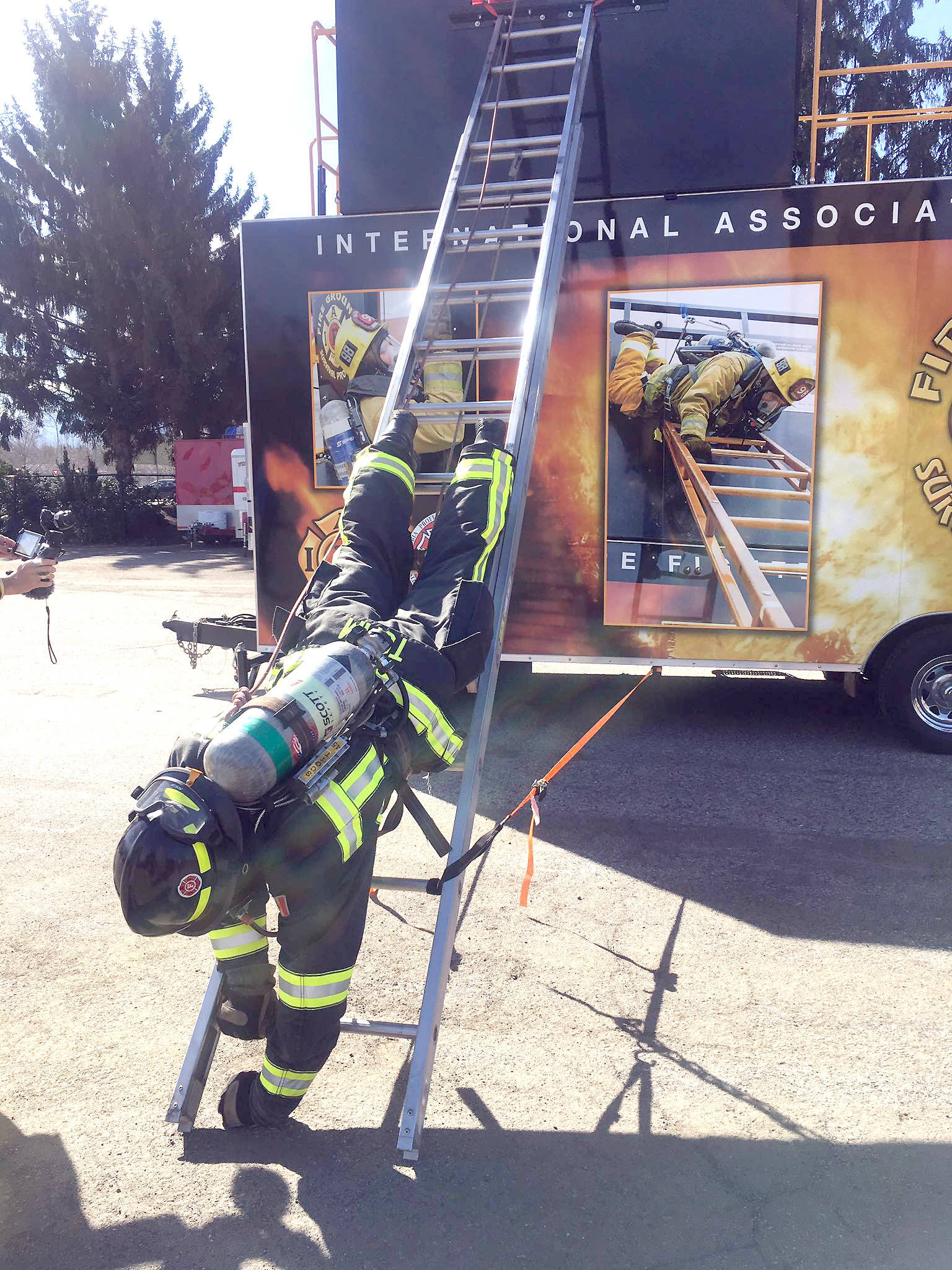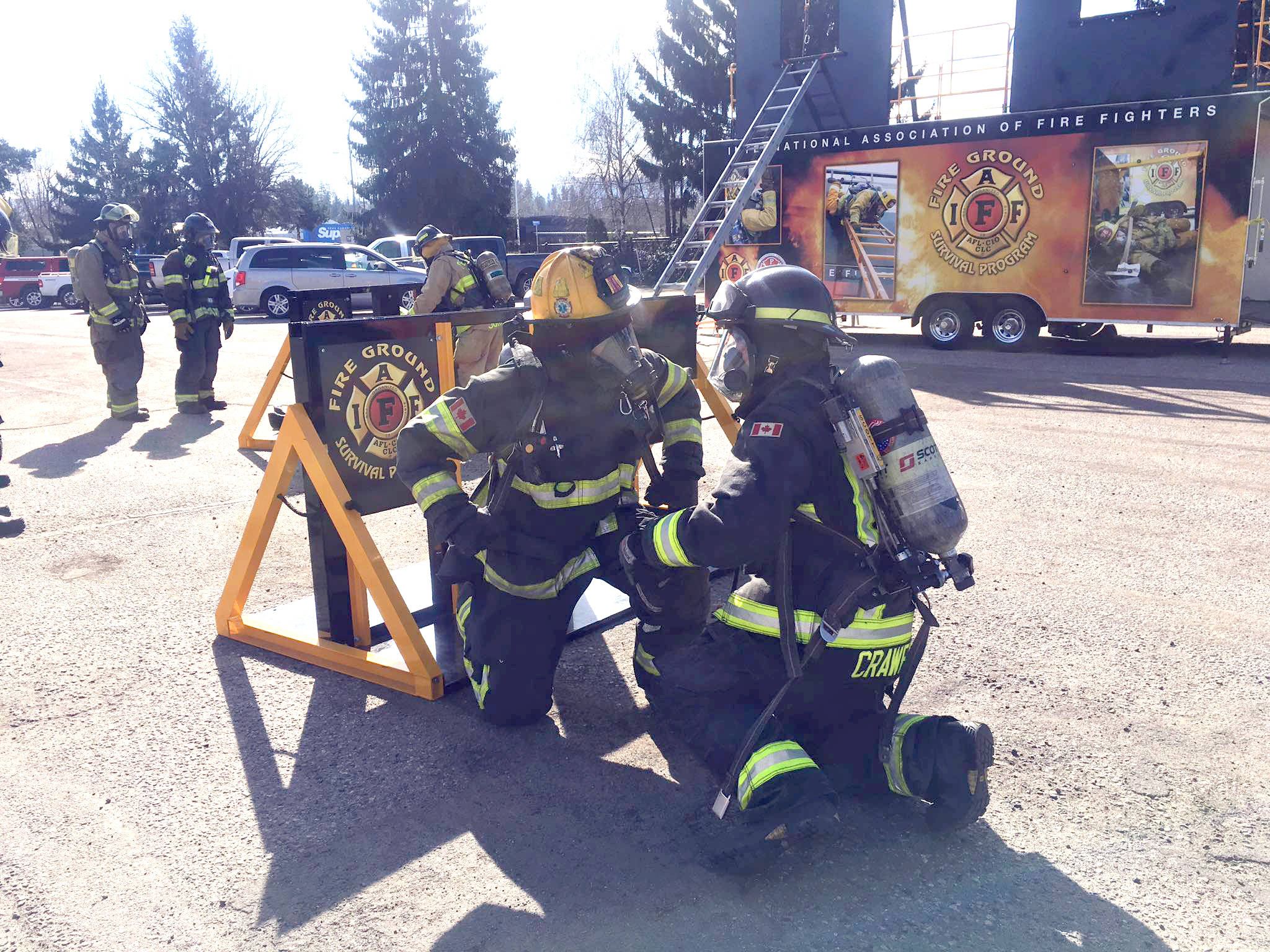Firefighters from across Western Canada converged in Kelowna this week for training aimed at saving their lives.
Geoff Boisseau, Toronto-based master instructor for the Fire Ground Survival Instructor training program, had small crews of firefighters learn how to disentangle themselves from wires, mimicking the circumstances faced in burning office buildings. He asked them to descend ladders in new ways and to break through a wall and get themselves through a hole that was no more than 16 inches wide.
Each training station was based on a scenario where a firefighter had died in the line of duty, said Boisseau.
“We’re trying to ensure it doesn’t happen again,” he said.
The challenge facing today’s firefighters is that their work is ever-evolving, given changing variables.
New construction techniques and materials have altered the way fires build, Boisseau said, explaining that 29 years ago when he became a firefighter it, on average, took a room 19 minutes to flash over — the term used for everything in the room to ignite. Today, it’s about three and a half minutes.
Boisseau said if he brought his original training into a fire he wouldn’t survive.
“That’s the challenge — we are not fighting the same fires our predecessors did. We are learning from what they learned but we’re having to learn at a faster pace,” said
Kelowna Fire Department chief Travis Whiting said “the materials we use, the way we build… they all contribute to how things burn.”
The local fire department, like other cities, has a prevention branch that liaises with developers to help fire crews know what they’re facing if a fire ever occurs.
That said, learning how to extricate oneself in a dangerous situation is important.
“Even in Kelowna in the last couple of months we have had a couple incidents where firefighters had been injured in fires and these rescue techniques are critical to make sure that we are all responding in the same way consistently,” he said.
The worst injury was at the Truswell fire, last year.
RELATED: The aftermath and overhaul of the Truswell condo fire
Close to 40 firefighters fought the massive condo blaze on Truswell Road and at the time Deputy Fire Chief Lou Wilde said four firefighters were trapped on a balcony. Before being rescued one suffered burns to his hands.
Today he’s still healing, and Whiting said he may return in the months to come.
“They were in a tough situation and our crews operated a level of professionalism that was incredible to watch and they were able to extricate those members safely,” he said.
“What happened on Truswell that day our crews went above and beyond to support each other to make sure they get out safely but these skills are the type of skills that were used that day and are an advancement on the skills that we had there.”
The IAFF, The International Association of Fire Chiefs and The National Institute for Occupational Safety and Health (NIOSH) have developed this program based on investigations and lessons learned from Firefighter Fatality investigations conducted by NIOSH. Fire departments attending include Kelowna, Kamloops, Penticton, Vernon, West Kelowna, Prince George, Trail, Fernie Whitehorse, Nelson and Swift Current.
To report a typo, email:
edit@kelownacapnews.com.
edit@kelownacapnews.com
Like us on Facebook and follow us on Twitter.

